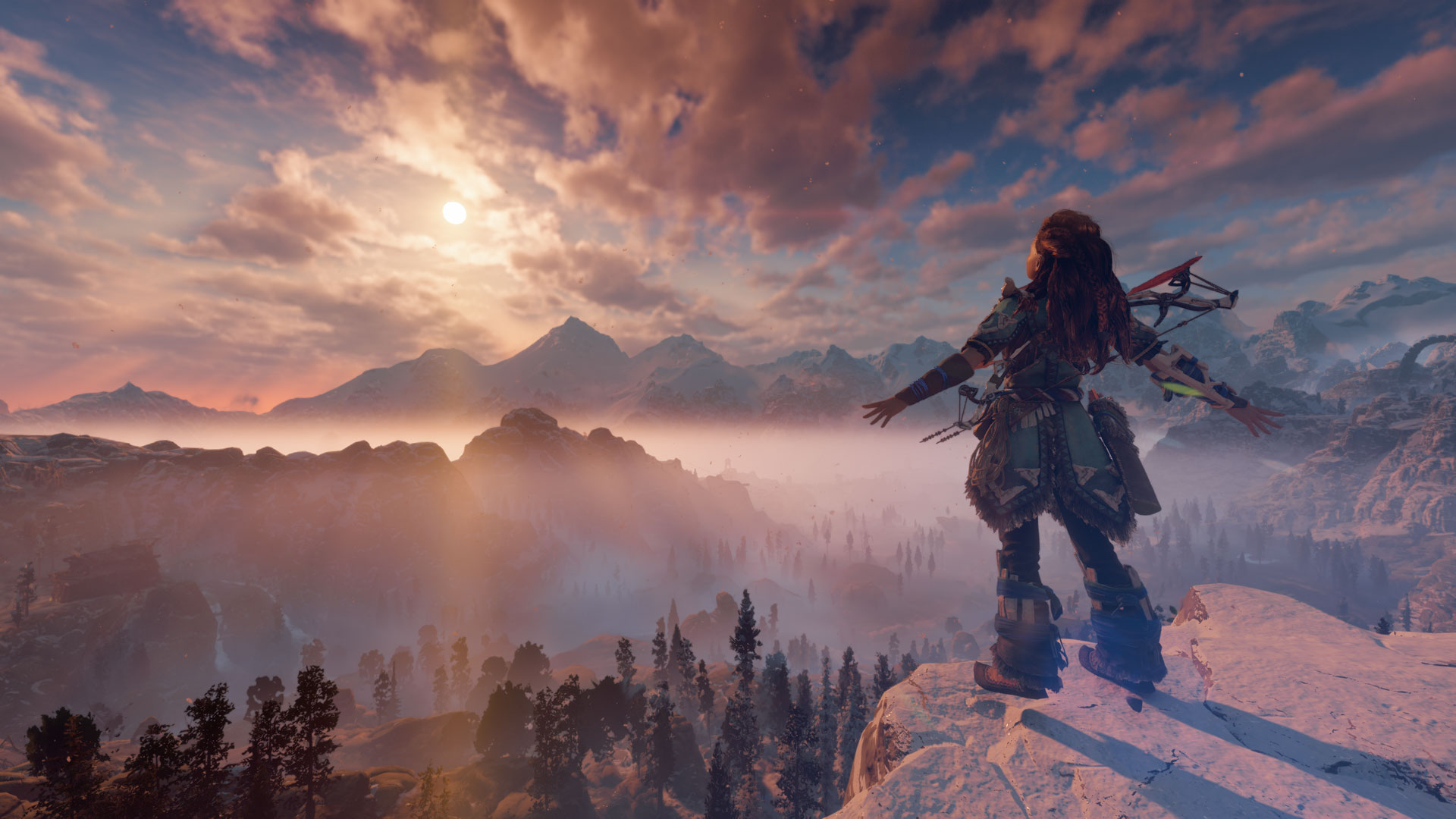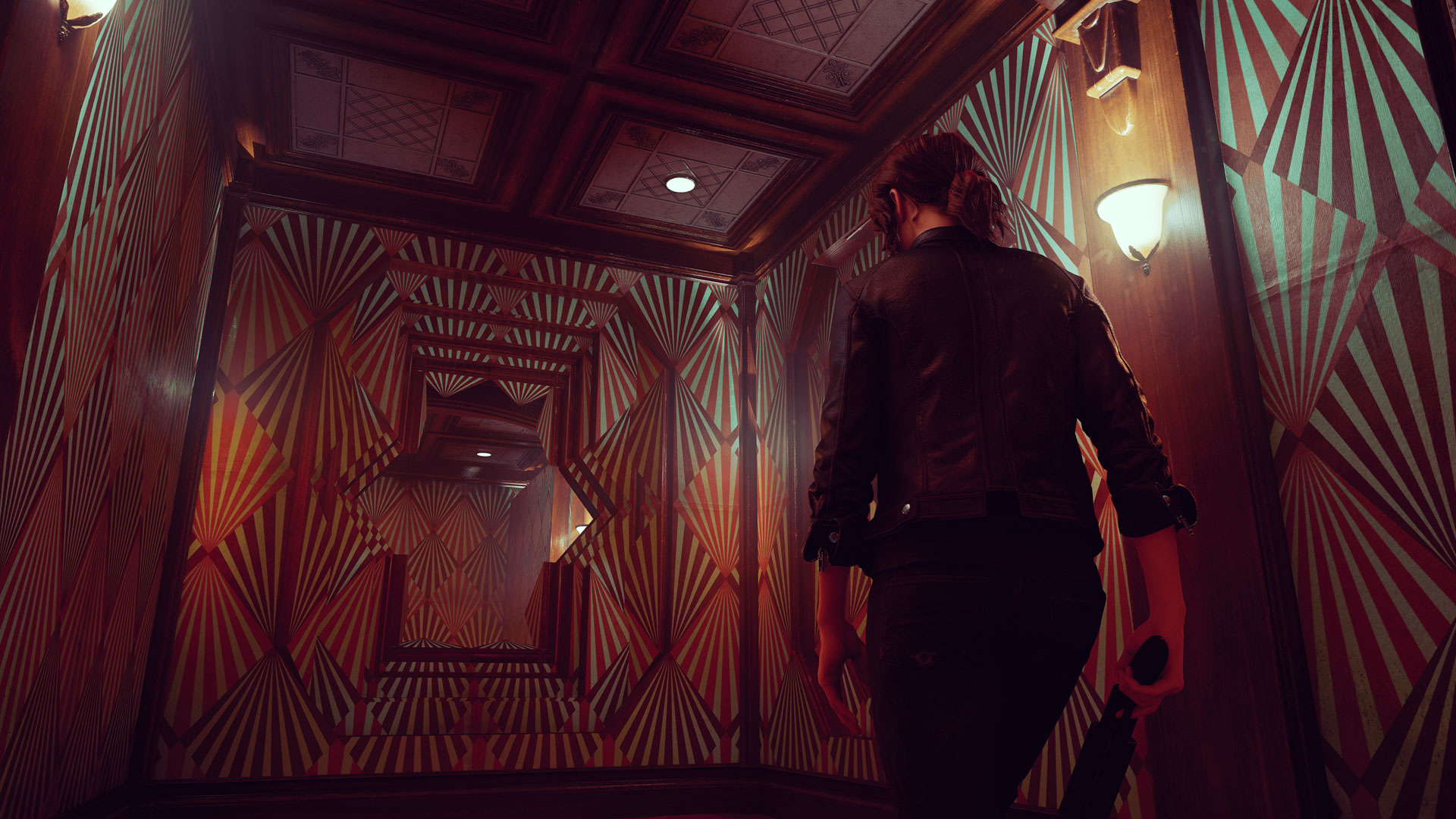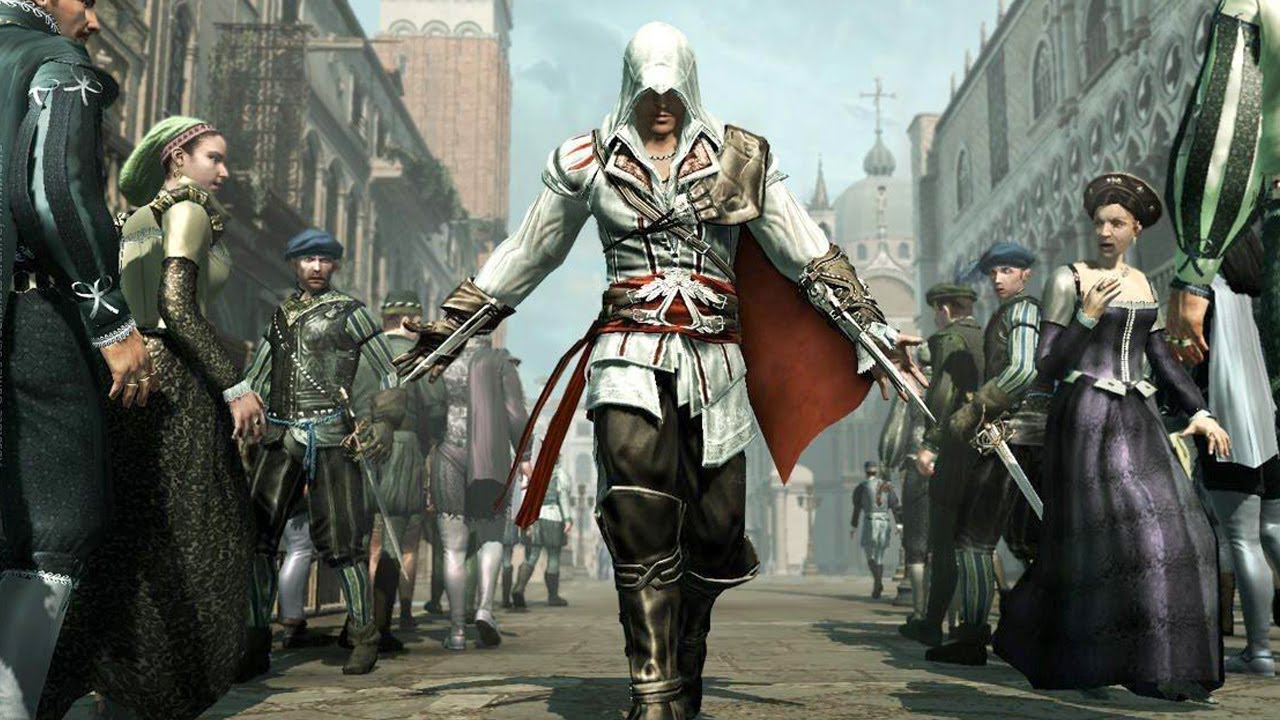
Video game music composers work audible magic. There's a popular take on movies and their music that suggests the former would be nothing without the latter. There's definitely some truth in that: watching a horror movie on mute is less scary; battle scenes become documentary sequences without bombastic orchestral arrangements. The same is true for games, albeit on a different scale entirely.
Soundscapes in games do more than frame a scene – it's not just a backdrop to complete a cinematic experience. Games use their scores and audio to actually guide us through environments, hint at events to come, and help to create emotional resonance in the player. It is, like so many of the elements that go into crafting a video game, an art form that is rarely understood or appreciated as we are playing.
To find out more about this craft, we spoke with Laced Records - a label under Keywords Studios who manage the release of video game music in digital and vinyl - and their partnered composers to learn more about how music and soundscapes impact games.
Journeys through audio

Matching music to environments isn't all that easy to achieve, although it is integral to create feel and movement in any given scene. Composers and audio technicians are entrusted with translating environmental designs into complimentary soundscapes that we can easily understand and appreciate. That's a process that can take many forms.
For Petri Alanko, long-time collaborator with Remedy Games, sometimes it can be as simple as trying to bring a human element to an unnatural space. "I've always loved to use similar source components in my music," he says. "For example, there are a lot of concrete areas in Control, and everyone probably knows how such a space sounds – or how something being dragged on concrete sounds. In some cinematics, I used drones whose sources originated from concrete being manipulated in some way. I produced a few odd-sounding convolutions by scraping a concrete block with a screwdriver."
Given the twisting nature and Brutalist architecture of The Oldest House, it's important that it sounded natural, even if what we're seeing is anything but. It helps ground the space, with each scrape of thrown furniture, Hiss screech, and echoing gunshot throughout the monolithic concrete structure sounding exactly as we'd expect it to. The familiar sounds that Alanko is able to create mirror the stark architecture, spaces, and materials of The Oldest House, even as it descends into the realms of the supernatural.

"Music plays a larger role than even the visuals when it comes to affecting players' emotions"
Tom Salta
Leveraging the materials of the environmental design to create a realistic sense of place isn't the only approach, mind. Joris de Man, composer for Horizon Zero Dawn and the Killzone series, believes that audio "works best when you compose towards an experiential feeling rather than a particular environment – i.e. what do I want the player to feel, rather than what does this environment look like". You see this shine through in Horizon Zero Dawn, with the audio working to reflect the development of Aloy all throughout the experience which, in turn, helps to drive our resonance with the character's journey. Composer Sascha Dikiciyan, known professionally as Sonic Mayhem who has contributed to everything from Quake 3 to Deus Ex: Mankind Divided, reinforces this sentiment, explaining: "The most important part is to match the atmosphere present on-screen and what’s happening in the story."
Weekly digests, tales from the communities you love, and more
It's key, then, for composers to reflect and enhance characters' emotions and our relationships with them as a result. Music is a powerful tool, one with the power to change the composition of a scene or enhance key character beats with simple audible hooks. Helping to guide the narrative through key themes is a device Alanko attempts to use when he can: "If I have an opportunity to reveal traces of the character's fate in the music, I love to do that. In some cases, even the game studio has no idea about clues to a character’s fate that I’ve hidden in the score."
That practice of hiding clues throughout composition is common, perhaps more so than you might expect or immediately recognise. It's a key way that game makers are able to subtly connect you with game worlds and the events that transpire within them. "Notes and melodies themselves can identify different characters, sometimes in ways that don’t reveal themselves to the players until later on," says Tom Salta, a soundtrack composer with a long history in the industry. "In Prince of Persia: The Forgotten Sands, I created a melody for the Princess and the Evil Witch with the same notes, but one was played backwards. Why? They were the same person, but the director didn't want to reveal that until the end. I thought it would be a cool Easter Egg of sorts to hide this clue right in the music itself."
A guiding hand

"I will dare to say that music plays a larger role than even the visuals when it comes to affecting players' emotions. There's an expression I often say: Music is what emotion sounds like," Salta continues, noting the power music can have as a guiding hand to a players experience.
One great example of this is in Assassin's Creed 2, in which audio is used fluidly, all in an attempt to guide Ezio seamlessly between different types of combat scenarios and environmental puzzles – sonic cues that indicate the type of experience the player should expect to encounter. "Depending on what the player is doing, that reflects in the music too. Often, there's music for everything you can think of – especially in open-world games where the player is free to explore indefinitely," says Assassin's Creed 2 composer Jesper Kyd. "Creating recurring motifs or themes can also be used to quickly bring about a certain mood."
That aspect of agility in a score is echoed by Dikiciyan who adds that his scores have been made up of layers that can be added to or stripped back depending on what the player is engaged in, and then mixed and 'given' to the player in real-time. This is why we get, for example, as Dikiciyan says, "musical ways of telling the player, 'OK, be careful now'".

"Sometimes, silence speaks louder than any blasting forte fortissimo"
Petri Alanko
There's a subtlety in audio design, then. That's part of the reason why it is so integral to guiding the attention of players, much in the same way that lighting and level design is used to keep players on the right path. "Sometimes, silence speaks louder than any blasting forte fortissimo," says Alanko, who is keen to highlight that that role of audio is to complement an experience rather than distract from it. "The smaller the changes, the better. I don't like listening to cues that are too obvious," he continues, adding, "I sometimes just open up a filter to let out a little more high-frequency material, or maybe add a quiet pulse, just to say something is about to happen."
Once you're aware of all this, you'll begin to pick up on the subtle ways audio is used to help direct your experience. It might be an orchestral swell as you lumber into combat, a lingering glimmer as you wander near a collectible, the deafening sound of silence before a carefully orchestrated scare, or even a quiet shift in key to denote an encroaching danger on the near horizon. "In Horizon Zero Dawn, some of those pieces of music were often linked to an environment, or a change from day to night," says de Man. "I composed a couple of more eerie pieces for night time, which are some of my favourite pieces in the game. Day time would accentuate the beauty and lushness of the world; night time would emphasize the potential dangers lurking around the corner."
Building relationships through audio
As important as it can be for composers and audio designers to frame the action on screen with sound, there's even more to be considered. Compositions can also shoulder the way that characters, environments, events, and even entire series are perceived. Take 'Ezio's Family' as an example, the theme of Ezio Auditore da Firenze which has become a signature sound of the entire Assassin's Creed series – finding its way into subsequent instalments long after Ezio was laid to rest. Its composer, Kyd, could never have anticipated that legacy when he was scoring Assassin's Creed 2, but it just goes to show what can happen when consideration is put into what's occurring beyond the fringes of the screen.
"In Assassin's Creed 2 you play as Ezio, a Master Assassin, and yet the theme is very emotional, tapping into something very different than what you might expect an intense action-stealth game to sound like," says Kyd. "My main inspiration was the death of Ezio's father and two brothers. I really felt that moment needed music in order for me to understand the character of Ezio better, how it affects him emotionally and motivates Ezio to become an assassin and avenge his family."
With Horizon Zero Dawn, de Man wanted his score to reflect the relationship between Aloy and the world she had set out to save. There's a natural tenor to peaceful exploration as a result, and the juxtaposition between serenity and suspense feels immediate once the Machines or rival tribes step into the picture. "These would always have a much more electronic vibe, and in the combat music, we’d deliberately juxtapose the more organic sounds with cold, harsh electronic ones," says de Man. This, he explains, helped to achieve a more "robotic nature" to the audio, with the frame of attention shifting away from the corruption of nature to survival against mechanical enemies – the audio guiding and tracking the encounter all throughout the encounter before settling back into serenity in the aftermath of it.

"My main inspiration was the death of Ezio's father and two brothers. I really felt that moment needed music in order for me to understand the character of Ezio better"
Jesper Kyd
For Alanko, he believes that finding a happy medium between reflecting the character and respecting the environment is key – something you see reflected all throughout the likes of Control, Quantum Break, and Alan Wake; Remedy's approach to world design reflected through the composition. "Each environmental setting has its own vibe. I usually try to combine that vibe with the characters in question, and adjust those according to the storyline," he says.
Where players might have known the general connection between a game's environment design and audio design, these composers (who are partnered with Laced Records) shine a light on exactly what they use for inspiration, what places they go to for complementing themes, and how to tie the approach to a game's music – and wider soundscape – to a game's environment. There's more to it than meets the ear, with a lot more coming on a deeper, more emotional level than just music to accompany places or aesthetics. As Tom Salta puts it: "Music is what emotion sounds like", and it's in a game's music and audio that we can find extra layers to our most beloved adventures, places, and stories in games.
Rob is the Deputy Editor of sister site, TechRadar Gaming, and has been in the games and tech industry for years. Prior to a recent stint as Gaming Editor at WePC, Rob was the Commissioning Editor for Hardware at GamesRadar+, and was on the hardware team for more than four years, since its inception in late 2018. He is also a writer on games and has had work published over the last six years or so at the likes of Eurogamer, RPS, PCGN, and more. He is also a qualified landscape and garden designer, so does that in his spare time, while he is also an expert on the virtual landscapes and environments of games and loves to write about them too, including in an upcoming book on the topic!



